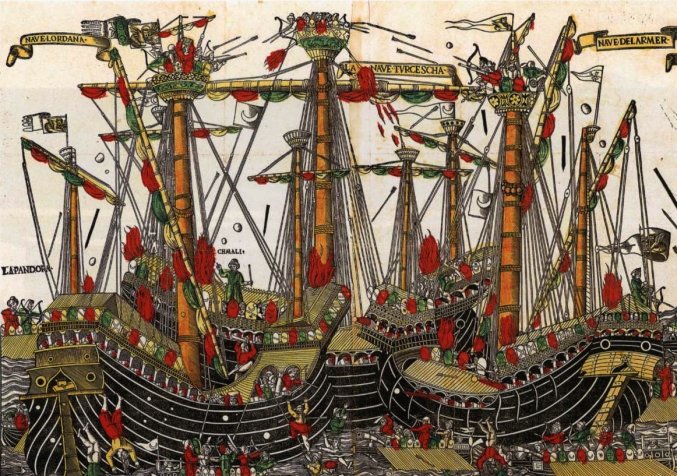DFG-Project "Medieval Maritime Predation: A Database Supported Analysis of Mediterranean Violence"

Updates Best Practice DMMP
a. https://hcdh.hypotheses.org/1784
b. https://hcdh.hypotheses.org/1778
c. https://hcdh.hypotheses.org/580
d. https://hcdh.hypotheses.org/451
Project description: Medieval Maritime Predation: A Database Supported Analysis of Mediterranean Violence
Bernat de Vilamarí, Pero Niño, Giuliano Gattilusio or Carlo Zeno were known as maritime predators in the late medieval Mediterranean, but was violence their only source of income? What else were they up to, why and for whom? Did different views of the same entrepreneur cause friction between competing maritime powers? And finally, to which extent did maritime powers suffer by and profit from these maritime agents?
These and related questions will be answered by Victòria Burguera, Laurin Herberich and Nikolas Jaspert, with the help of the Database of Medieval Maritime Predation, a flexible and relational tool designed to fulfil the following five major objectives:
- Identifying the geographic scopes and social careers - indeed, the prosopography - of maritime predators and their victims
- Reconstructing their communication networks
- Highlighting the diplomatic and discursive frameworks and the effects of maritime violence
- Charting geographic hotspots and diachronic variations of maritime predation
- Evaluating its economic payoff
The DMMP will allow the simultaneous and large-scale analysis of personal, economic, and political data. Textual, visual and material sources will not only be linked to images of the respective original document or artefact, but will also be consistently related to geodata. GIS tracking in combination with nautical information will allow enable the users to study potential predation incidents, individual routes as well as regular itineraries.
Data access will be possible via text search, category search and map search. The latter will not only visualise simple synchronous geographic information (e.g. all incidents of maritime predation of a certain year), but also display complex diachronic information (e.g. the changing hotspots of maritime predation or predators’ itineraries throughout the 14th and 15th centuries). Think of predators and merchants, booty and goods, rumours and news. Thanks to its open-ended design, the DMMP will be a multipurpose tool that will allow for answering open questions about maritime predation, but also for formulating questions yet to be asked.
The questions posed at the outset will be discussed in two monographs, one on the Western Mediterranean by Victòria Burguera, the other on the Eastern Mediterranean by Laurin Herberich. Through parallel data entry and consultation of the DMMP, Burguera and Herberich will be able, for example, to reconstruct incidents of maritime predation from scattered information and to uncover trans-imperial networks of individuals.
Together, the two monographs will advance the study of the medieval Mediterranean and provide for shifts in perspective: 1) from the North Sea to the source-rich Mediterranean, 2) from interreligious to intrareligious violence, and finally 3) from an understanding of maritime predators based on limited sources to an understanding of them as trans-imperial entrepreneurs based on trans-national analysis. This will be accomplished by compiling and analysing information from the most important archives of the Christian Medieval Mediterranean (l’Arxiu de la Corona d’Aragó, l’Archivio di Stato di Genova, l’Archivio di Stato di Venezia, National Archives of Malta), but the DMMP will still be open for data entry from the medieval Islamic world.
Both the results of the research conducted over the three-year funding period as well as the operability of the DMMP will be demonstrated and discussed during an international workshop to be hosted at Heidelberg University in 2025.
Image: Battle of Zonchio, 1499


